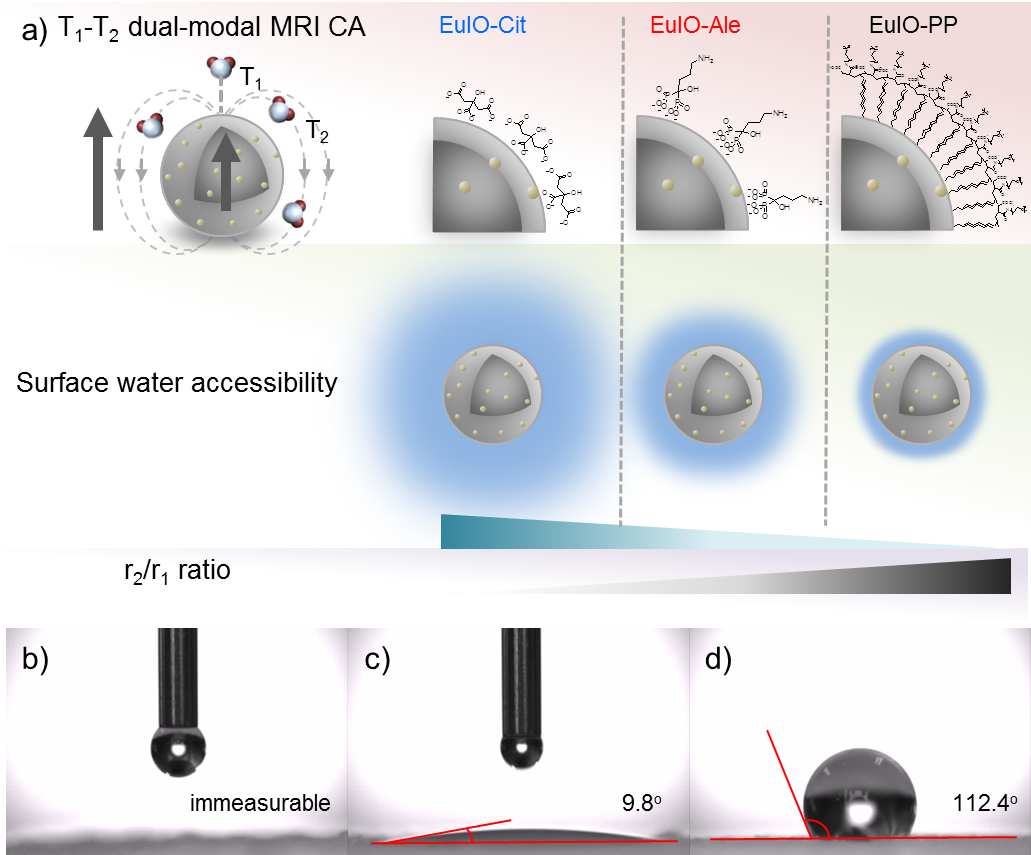|
Lanthanide-engineered magnetite NPs are of particular interest owing to their unique optical and magnetic properties. However, to date, the studies have focused on synthesis and the development of T1-T2 dual-modal MRI contrast agents (CAs) utilizing lanthanide ions.
Herein, we show that Gd-engineered ultrasmall magnetite NPs do undergo the Verwey transition at ∼110 K and that surface anisotropy is an important factor in such a transition. In addition, we report the relaxivity tuning of T1-T2 dual-modal MRI CAs depending on the surface water accessibility, and the monitoring protein interactions with T1-T2 dual-modal MRI CAs. To date, the realization and the relaxivity tuning of T1-T2 dual-modal MRI CAs have been attained through the dopant, size and morphology of nanomaterials, remaining open opportunities for sensing applications of T1-T2 dual-modal MRI CAs. We observe that the correlation between the hydrophobicity of surface materials and the longitudinal relaxivity (r1) of T1-T2 dual-modal MRI CAs presents exponential decay feature. Europium-engineered iron oxide (EuIO) as core nanoparticles (NPs) is prepared. The r1 relaxivity of EuIO-Cit exhibits 13.2 fold higher than that of EuIO-PP. According to the surface materials, EuIO can act as T1-T2 dual-modal (EuIO-Cit) or T2-dominanted MRI CAs (EuIO-PP). It is also explored that the feasibility of the resulting nanosystem as a sensor to report environmental changes, such as albumin interaction. The albumin interaction on T1-T2 dual-modal MRI CAs shows the change in both T1 and T2 relaxation time, which would the mutually confirmative information. Dy-engineered IO shows the high performance contrast ability at ultrahigh magnetic field (9.4 T) compared with the reported one. Detailed experiment methods and results would be presented at this meeting.
|

|
 121st General Meeting of the KCS
121st General Meeting of the KCS
 121st General Meeting of the KCS
121st General Meeting of the KCS